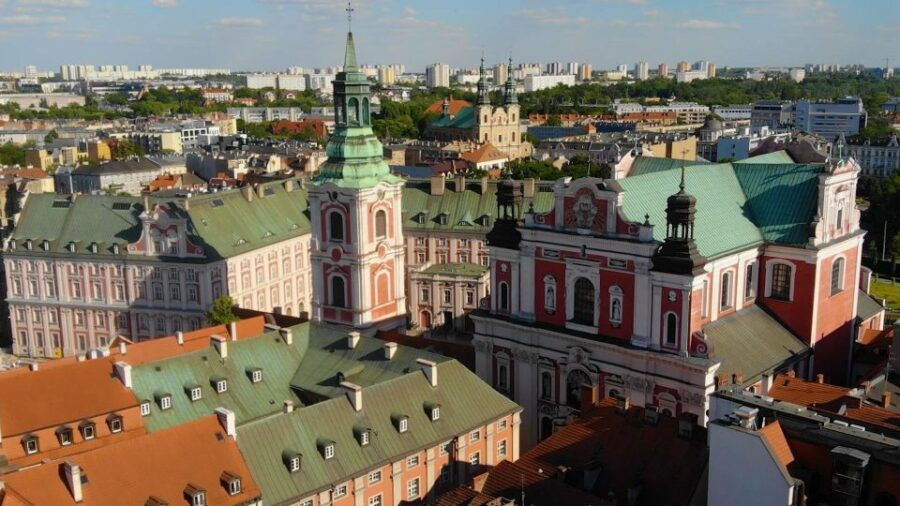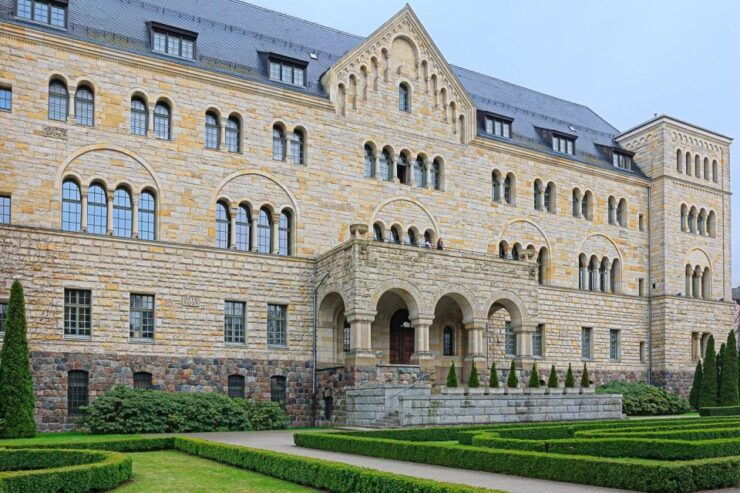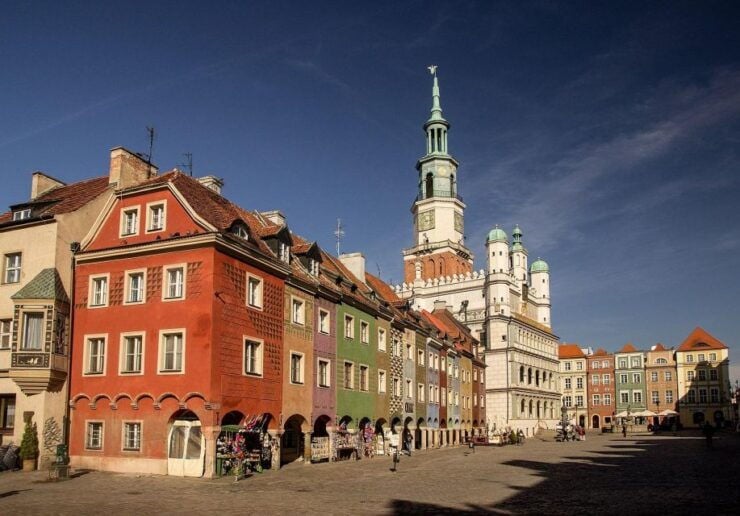During Poland’s Golden Age, like the majestic rising of the phoenix from the ashes, the country flourished in arts, science, and governance. However, as time progressed, Poland faced tumultuous times leading to a period of decline that tested its resilience.
What factors contributed to this fall, and what sparked the remarkable rebirth that followed, shaping the nation’s identity to this day? Through exploring these pivotal moments in Poland’s history, one can unravel the intricate tapestry of its journey from glory to restoration, offering a profound insight into the nation’s enduring spirit.
Good To Know

- Poland’s Golden Age marked by cultural achievements, economic growth, and political stability.
- Weak governance and external pressures led to Poland’s decline and eventual partition.
- Poland overcame challenges with resilience, implementing policies for growth and restoring its global standing.
- Cultural renaissance and architectural evolution showcase Poland’s rich history, innovation, and adaptability.
History of Poland’s Golden Age

During Poland’s Golden Age, the nation experienced a flourishing period marked by cultural achievements, economic growth, and political stability. This era, spanning from the late 16th to the early 17th century, was a time of great prosperity and influence for Poland.
Notable for its significant rise in power and prestige, Poland became a major player in European politics and culture. The Golden Age saw the country’s borders expand, trade flourish, and the arts thrive. The historical significance of this period lies in Poland’s emergence as a dominant force in the region, setting the stage for its future as a key player in European affairs.
However, like all periods of prosperity, the Golden Age eventually gave way to a decline, marking the end of this remarkable chapter in Polish history.
Find more activities and experiences we've covered in Poznan.
The Decline of Poland

Witnessing a series of challenges and internal conflicts, Poland’s decline in the late 18th century was marked by a gradual erosion of its once formidable power and influence on the European stage. During this period:
Polish struggles intensified as neighboring powers encroached on its territory.
The lack of a strong central authority led to internal divisions and weakened governance.
European alliances proved to be double-edged swords, often entangling Poland in conflicts beyond its control.
Economic hardships and military defeats further exacerbated Poland’s decline, pushing it towards a vulnerable position on the continent.
These factors collectively contributed to Poland’s diminishing stature and eventual partition by its more powerful neighbors.
Challenges and Rebirth
Amidst the challenges faced, Poland navigated a complex path towards its eventual rebirth, overcoming obstacles with resilience and determination. The country grappled with economic hardships, political instability, and territorial losses.
However, through strategic alliances, internal reforms, and a strong sense of national identity, Poland began its revival. The government implemented policies to stimulate economic growth, attract foreign investment, and improve infrastructure. Plus, efforts were made to strengthen diplomatic relations and promote cultural exchange.
The revival of Poland not only restored its place on the global stage but also instilled a sense of pride and unity among its people. The challenges faced during this period tested the nation’s fortitude but ultimately led to a remarkable transformation and resurgence.
Cultural Renaissance in Poland
Experiencing a vibrant cultural renaissance, Poland showcases a rich tapestry of artistic expression and historical significance. This cultural revival is evident through various mediums, reflecting Poland’s deep-rooted traditions and innovative spirit:
Artistic Diversity: Poland’s cultural scene boasts a diverse range of artistic expressions, from traditional folk art to contemporary installations.
Historical Narratives: Artists in Poland often draw inspiration from the country’s rich history, weaving tales of resilience and triumph into their creations.
Innovative Spaces: The country’s galleries and performance venues serve as hubs for artistic experimentation and expression, attracting both local talent and international acclaim.
Cross-Cultural Influences: Poland’s artistic landscape is enriched by cross-cultural collaborations, fostering a dynamic exchange of ideas and techniques.
Architectural Evolution in Poland
The architectural landscape of Poland has undergone a remarkable evolution, reflecting a fusion of historical influences and contemporary design trends. From the majestic Gothic Revival structures that dot the skyline to the sleek lines of modern Contemporary Designs, Poland showcases a diverse range of architectural styles that captivate visitors and locals alike.
Gothic Revival buildings, with their intricate detailing and soaring spires, stand as a testament to Poland’s rich history and cultural heritage. Meanwhile, Contemporary Designs bring a fresh perspective, blending innovation with functionality to create striking urban spaces.
This architectural journey through Poland’s past and present not only highlights the country’s resilience but also serves as a reminder of its enduring creativity and adaptability.
Impact of Modernization
Modernization in Poland has significantly transformed the country’s architectural landscape, ushering in a wave of innovative designs and infrastructural developments. This shift has led to various effects on urban development trends:
Skyscraper Boom: The modernization drive has seen the rise of skyscrapers in major cities like Warsaw and Krakow, reshaping their skylines.
Revitalization of Historic Districts: Modernization efforts have revitalized historic districts, blending old charm with contemporary elements.
Green Spaces Integration: Urban development now emphasizes incorporating green spaces within city centers, promoting sustainability and a better quality of life.
Technological Advancements: Modernization has brought about technological advancements in urban planning, transportation systems, and smart city initiatives, enhancing overall livability.
Poland’s Future Prospects
With a focus on sustainable development and innovation, Poland is poised for a promising future that embraces progress while honoring its rich history.
The country’s future opportunities lie in its commitment to economic growth through strategic investments in key sectors like technology, renewable energy, and infrastructure. Poland’s advantageous geographic location and membership in the European Union further enhance its potential for economic prosperity.
By leveraging its skilled workforce and fostering a business-friendly environment, Poland is attracting foreign investment and driving innovation.
As the nation continues to modernize and adapt to global challenges, it positions itself as a competitive player in the international market.
With a proactive approach to development, Poland is paving the way for a bright and dynamic future filled with growth and opportunities.
Common Questions
How Can Visitors Best Immerse Themselves in Poznań’S History Beyond the Typical Tourist Attractions Mentioned in the Tour?
Visitors can deeply engage with Poznań’s history through interactive workshops, historical reenactments, walking tours, and underground explorations. These experiences offer immersive insights beyond typical tourist attractions, creating a richer understanding of the city’s past.
Are There Any Lesser-Known Architectural Gems in Poznań That Are Worth Exploring?
Visitors can uncover forgotten historic sites and explore hidden architectural wonders in Poznań. From hidden gems tucked away in alleys to lesser-known masterpieces, there are plenty of surprises waiting to be discovered beyond the typical attractions.
What Are Some Recommended Local Dishes or Food Experiences That Tourists Should Try While in Poznań?
When in Poznań, travelers should indulge in local delicacies like St. Martin’s croissants, pyry z gzikiem (potatoes with quark), and traditional Polish pierogi. Culinary adventures await in this vibrant city known for its rich gastronomic heritage.
How Has Poznań’S Cultural Scene Evolved in Recent Years, and Are There Any Upcoming Events or Festivals That Visitors Should Look Out For?
Poznań’s cultural scene has blossomed with vibrant cultural festivals, local art exhibitions, and a thriving music scene showcasing emerging artists. Visitors should look out for upcoming events to enjoy the city’s artistic richness.
What Sustainable Practices or Initiatives Is Poznań Implementing to Preserve Its Historical and Cultural Heritage for Future Generations?
Poznań implements preservation initiatives and sustainable practices to safeguard its historical and cultural heritage for future generations. These efforts ensure the city’s rich past is protected while promoting cultural heritage sustainability.
The Sum Up
To sum it up, Poland’s journey from its Golden Age to modern times is a fascinating tale of resilience, challenges, and cultural evolution.
Despite facing numerous obstacles, the country has managed to rise from the ashes and embrace a new era of growth and prosperity.
The architectural marvels, rich history, and vibrant present of Poland offer a unique perspective on its past, present, and future.
Join in the exploration and witness the beauty of Poland’s fall and rebirth firsthand.
You can check availability for your dates here: More Great Tours NearbyMore Tour Reviews in Poznan
Looking for something different? Other Poznan activities we've written about
- Pozna: Discover & Play A Guided Tour with a City Game
- Pozna: Cathedral Island and ródka District Guided Tour
- Pozna: Drone Lesson with Instructor and City Tour
- Pozna: Extreme Bungee Jumping Adventure
- Pozna: Bike Tour of Top Highlights with a Local Guide
- Pozna: Craft Beer Tasting with Traditional Dinner
- Pozna: Whisky Tasting with Dinner
- Poznan: Spy-Themed Walk & Game with Host
- Pozna: Romantic Italian Dinner with Live Music and Wine
- Poznan Old Town and Top Attractions Private Walking Tour
- Pozna: Wine Tasting and Dinner in the Heart of Pozna
- Pozna: Guided Bike/E-Bike Tour with Local Attractions
